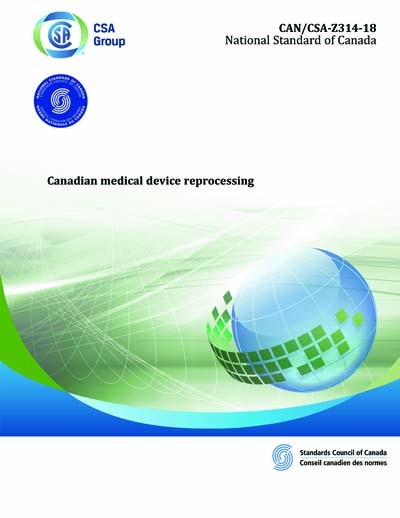Historical
CAN/CSA Z314-2018
Canadian medical device reprocessing
Preface
This is the first edition of CAN/CSA-Z314, Canadian medical device reprocessing. It replaces CSA Z314.0, Z314.3, Z314.8, Z314.10.1, Z314.10.2, Z314.14, Z314.15, Z314.22, and Z314.23. This Standard addresses the safe and effective reprocessing of medical devices and supplies. CSA acknowledges that the development of this Standard was made possible, in part, by the financial support of the governments of Alberta, British Columbia, Manitoba, New Brunswick, Newfoundland and Labrador, Northwest Territories, Nova Scotia, Nunavut, Ontario, Prince Edward Island, Québec, Saskatchewan, and Yukon, as administered by the Canadian Agency for Drugs and Technologies in Health (CADTH).Scope
1.1 This Standard is intended to address the safe, effective, and reliable reprocessing of reusable medical devices at each phase of the reprocessing workflow, including a) establishing a QMS for the MDRD, including- i) key performance indicators; ii) policies and procedures; iii) documentation; iv) roles and responsibilities; v) management review; vi) planning, resources and operations; vii) environmental conditions and infrastructure; and viii) recalls and alerts;
- i) qualifications; ii) occupational health and safety; and iii) infection prevention and control;
- i) decontamination; ii) preparation of medical devices for reprocessing; iii) sterile barrier systems; iv) sterilization methods; v) storage, transportation, and distribution; and vi) equipment maintenance and quality assurance;
Content Provider
CSA America, Inc. [csa]






